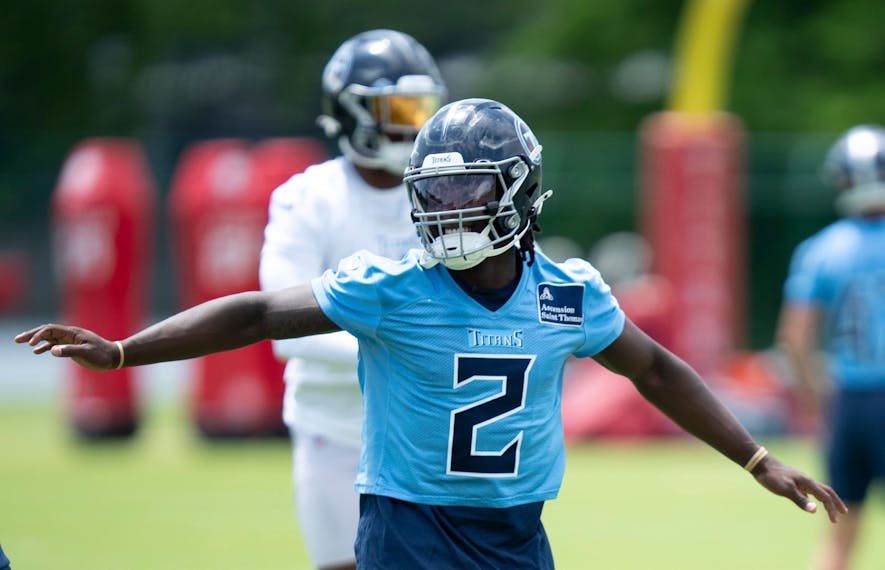Are receiving backs inherently more valuable than they used to be? Consider these three timeframes, each 14 years apart:
- In 1995, receiving points accounted for 30.5% of the top 36 running backs' PPR fantasy scoring. Those 36 backs averaged final stat lines of 41 receptions, 334 yards, and 1.3 touchdowns.
- In 2009, receiving points accounted for 25.5% of the top 36 running backs' PPR scoring. Those 36 backs averaged 36 for 290 and 1.2.
- In 2023, receiving points accounted for 28.0% of the top 36 running backs' PPR scoring. Those 36 backs averaged 42 for 303 and 1.8.
Sure, running backs are catching more touchdowns nowadays, but so is everyone else. The volume isn't increasing, nor is a quarterback's reliance on checking down. Dating back to 2019, only one true RB has cleared 85 catches in a season (Austin Ekeler, twice).
Don't misunderstand: that's a fine mark, 85 catches! I'd be thrilled to get that from my RB1 or RB2. Still, we must keep expectations in check and realize that very, very few will sniff that number. Many factors influence running back receiving totals, which aren't very sticky from year to year, like:
- Catch rate. It's a simple one, but it's never easy to track. Consider that the Jets' Breece Hall led all RBs in 2023 by catching 76 of his 95 targets (80%). Now consider that, just a year before, a rookie Hall dropped 5 of his 31 targets and finished at a pitiful 61%.
- Touchdown rate. Some backs are used more in the red zone, sure. But in 2022, when we saw Jerick McKinnon targeted 11 times inside the 10, finding the end zone on 7 of them… we were right to ask questions in 2023.
- Injury risk. Running backs go down at a higher rate (and for longer) than the other skill positions do. Look no further than McKinnon's 2023: he dropped from 71 targets over a team-high 636 snaps to just 32 over 264.
And yet, identifying high-volume receiving backs is crucial to most fantasy builds. They're not more valuable than they used to be, but they're definitely more valuable than backs who don't catch many passes.
In 2023, only 4 of the top 12 running back finishers caught fewer than 50 balls. One was the Rams' Kyren Williams, who caught 48 while missing five games. One was the Bills' James Cook, who caught 41 but found the end zone with 4 of them. The other two, Raheem Mostert and Derrick Henry, combined to score 32 touchdowns.
Moving on, we see that 8 of the 12 RB2s (RB13-RB24) topped the 40 receptions. That didn't even catch Saquon Barkley or D'Andre Swift, both splendid receiving backs who caught 39 apiece in partial seasons. The Lions' David Montgomery and the Ravens' Gus Edwards managed to finish RB2 as two-down guys, but they also went bonkers with touchdowns.
If you identified those guys pre-draft, great! Otherwise, your best bet was to chase proven, three-down backs who operated as their teams' centerpieces.
When I chase mid-round running backs, I'm far less interested in the handcuff types I have to stash and wait around on. Rather, I'm chasing the part-timers who, for one reason or another, have at least a path to 40+ receptions in their sights.
To that end, here are four later picks (with their RB ADP in parentheses) who could easily finish with an RB2 or better line in 2023:
Tyjae Spears, Tennessee (RB33)
Spears comes at a noticeable discount from teammate Tony Pollard, who's riding the "wave" of massive 2023 disappointment and sits at RB25. It's hard to see why. There are ample reasons to doubt that Pollard, who struggled mightily as the Cowboys' bell cow last year, will run away with or even lead the Tennessee backfield. Offensive coordinator Nick Holz has used the term "interchangeable" over the offseason.
Spears and the discount make much more sense. As a rookie, he siphoned 100 carries away from Derrick Henry, roughly double any other Henry backup over the past half-decade. Spears also ran 17.4 routes per game and caught 52 balls in a moderate timeshare. That was no surprise after he developed as a pass-catcher at Tulane, with 41 catches over his final 2 years.
Pollard isn't built to rule over a backfield. Spears could lead it outright, making his current projections look like a baseline.
Chase Brown, Cincinnati (RB37)
Last year's Bengals sent just 14% of targets to their running backs, one of the league's lowest marks, and lead dog Joe Mixon caught a ho-hum 52 balls. Why are we now concerned with Brown, who enters the year as a timeshare guy?
Well, there's ample reason to believe Brown will dominate the Bengals' passing downs. We saw glimpses down the 2023 stretch: over the final five games, once he'd vanquished Trayveon Williams as the No. 2, Brown ran a respectable 29 routes on his 85 snaps. And he was wildly effective, too: his 4.46 yards per route was double that of any other RB with 10+ receptions. Brown brings a pedigree, too, after a senior year spent dominating the Illinois backfield (328 carries, 27 receptions, 13 touchdowns).
Coach Zac Taylor has always leaned heavily on a single feature back in Mixon, with only breathers given out. And Brown may be better equipped to dominate than journeyman Zack Moss, who's long been one of the NFL's least effective receiving backs.

